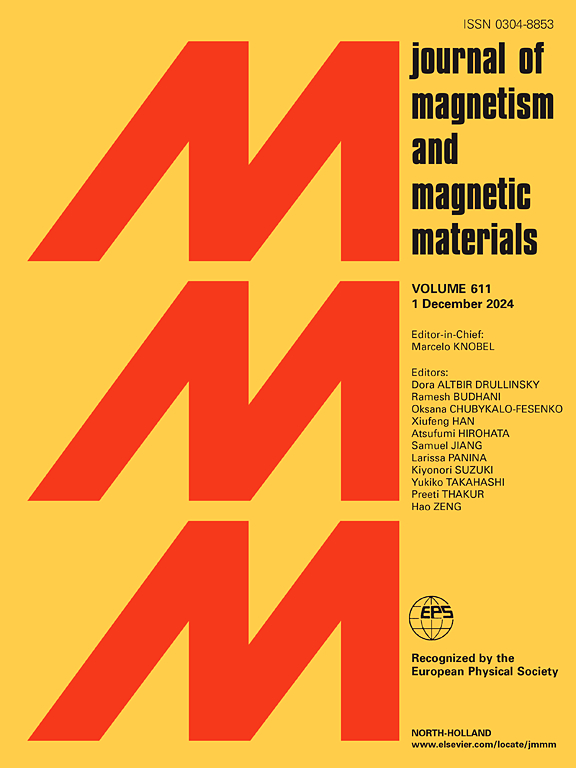Nd-Fe-B烧结EPMA图像中重稀土的浓度提取及空间分布识别
IF 2.5
3区 材料科学
Q3 MATERIALS SCIENCE, MULTIDISCIPLINARY
引用次数: 0
摘要
通过晶界扩散技术在Nd-Fe-B烧结磁体中添加重稀土元素,可以显著提高磁体的矫顽力,但剩余物的减少很少。扩散源的扩散深度和分布是评价扩散过程效率的重要指标。辉光放电质谱法可以在有限的区域内依次剥离磁体层,以测量不同深度的扩散源浓度。然而,由于基磁体材料的多相特性和扩散源的不均匀分布,精度受到影响。相比之下,电子探针微分析可以通过分析磁铁的扩散截面直接观察扩散深度和分布。与数字图像处理技术相结合,电子探针微分析允许高通量图像分析,以计算深度间隔的浓度,建立深度-浓度关系,并预测特定深度的重稀土元素浓度。描述扩散源的分布是一个重大的挑战。本文首次提出了一种概率去噪扩散模型来量化扩散源的分布。EPMA图像被分割成3700个不同的位置进行模型训练。训练后的模型可以生成具有相同重稀土元素在任意位置分布的扩散图像。通过对各种磁体的微观图像进行训练,该模型建立了磁体性能与微观结构之间的深刻相关性,为磁体或扩散源的优化提供了实用指导。本文章由计算机程序翻译,如有差异,请以英文原文为准。
Concentration extraction and spatial distribution identification of heavy rare earth in EPMA images of sintered Nd–Fe–B
The addition of heavy rare earth elements to sintered Nd–Fe–B magnets through grain boundary diffusion techniques can significantly improve the coercivity of magnets with minimal reduction in remanence. The diffusion depth and distribution of the diffusion source are critical metrics for evaluating the efficiency of the diffusion process. Glow discharge mass spectrometry can sequentially strip layers of the magnet within a limited region to measure the concentration of the diffusion source at various depths. However, the accuracy is compromised by the multiphase nature of the base magnet material and the inhomogeneous distribution of the diffusion source. In contrast, electron probe microanalysis enables direct observation of the diffusion depth and distribution by analyzing diffusion cross-sections of the magnet. Coupled with digital image processing techniques, electron probe microanalysis allows high-throughput analysis of images to calculate concentration across depth intervals, establish depth-concentration relationships, and predict the concentration of heavy rare-earth elements at specific depths. Describing the distribution of diffusion sources presents a significant challenge. In this work, a probabilistic denoising diffusion model is proposed for the first time to quantify the distribution of the diffusion source. EPMA images were segmented into 3,700 distinct positions for model training. The trained model can generate diffusion images with the same distribution of heavy rare-earth elements at any position. By training on microscopic images of various magnets, the model establishes a profound correlation between magnet performance and microstructure, providing practical guidance for optimizing magnets or diffusion sources.
求助全文
通过发布文献求助,成功后即可免费获取论文全文。
去求助
来源期刊

Journal of Magnetism and Magnetic Materials
物理-材料科学:综合
CiteScore
5.30
自引率
11.10%
发文量
1149
审稿时长
59 days
期刊介绍:
The Journal of Magnetism and Magnetic Materials provides an important forum for the disclosure and discussion of original contributions covering the whole spectrum of topics, from basic magnetism to the technology and applications of magnetic materials. The journal encourages greater interaction between the basic and applied sub-disciplines of magnetism with comprehensive review articles, in addition to full-length contributions. In addition, other categories of contributions are welcome, including Critical Focused issues, Current Perspectives and Outreach to the General Public.
Main Categories:
Full-length articles:
Technically original research documents that report results of value to the communities that comprise the journal audience. The link between chemical, structural and microstructural properties on the one hand and magnetic properties on the other hand are encouraged.
In addition to general topics covering all areas of magnetism and magnetic materials, the full-length articles also include three sub-sections, focusing on Nanomagnetism, Spintronics and Applications.
The sub-section on Nanomagnetism contains articles on magnetic nanoparticles, nanowires, thin films, 2D materials and other nanoscale magnetic materials and their applications.
The sub-section on Spintronics contains articles on magnetoresistance, magnetoimpedance, magneto-optical phenomena, Micro-Electro-Mechanical Systems (MEMS), and other topics related to spin current control and magneto-transport phenomena. The sub-section on Applications display papers that focus on applications of magnetic materials. The applications need to show a connection to magnetism.
Review articles:
Review articles organize, clarify, and summarize existing major works in the areas covered by the Journal and provide comprehensive citations to the full spectrum of relevant literature.
 求助内容:
求助内容: 应助结果提醒方式:
应助结果提醒方式:


